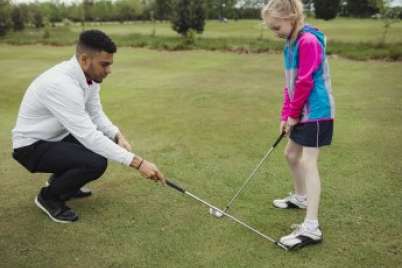
“The Grizzlies” film showcases the power of sport—and hope
Based on real-life events, The Grizzlies tells the story of the Inuit youth living in Kugluktuk, and a white southerner named Russ Sheppard who moves there to teach, clueless about Inuit culture.
On his first day, he asks the students to call him by his first name, rather than “Mr. Sheppard.” “We wouldn’t call you ‘Mr.’ anyway,” says one student. “‘Mr.’ is a white man’s word.”
Sheppard is shocked by the community’s social issues: one student’s father repeatedly beats his mother, while the boy escapes to sleep in an empty shipping container; the parents of another student frequently pass out in their living room, empty liquor bottles scattered around them; a female student is abused by her boyfriend, who later kills himself.
The Grizzlies

Director: Miranda de Pencier
Year: 2018
Production company: Northwood Entertainment
Format: Playing in select theatres across Canada
Run time: 104 minutes
Rating: PG
Physical activity as a powerful and positive social outlet
Sheppard, a lacrosse player, decides to start up a team to provide his students with physical activity and a positive social outlet. It takes some convincing—“I don’t like to run,” one boy tells Sheppard—but the Kugluktuk Grizzlies are born.
At practices, Sheppard shows them how to handle a lacrosse stick, teaches them the rules of the game, and has them sprinting across the snow. They grow to love the sport, so much so that they’re willing to come to class in order to keep playing—a rule Russ implements after many of the kids were skipping school but showing up at practice.
While the film is profoundly sad in many ways, there are moments of levity too. As Sheppard jogs around the community one day, a man pulls up on an ATV. “Are you in a hurry? Do you need a ride?” the man asks. “No, I’m just running,” Sheppard responds. The man looks over his shoulder. “From what?”
Sheppard’s students, from Adam, an excellent hunter, to Zach, a scrappy fighter, to Miranda, a quiet, studious girl, are the stars of the film. They’re resilient and multi-dimensional, children dealing with adversity most adults will never have to face.
The Grizzlies shows how the bonds the students form through sport help make them stronger. The team serves as a support system.
“The lacrosse kids at the school carry their heads held high, and with smiles on their faces,” Adam says during a town meeting. “We are proud, strong, full of hope. Instead of drinking or fighting or killing ourselves, we play.”
When students grieve the loss of another classmate, they sit in a circle in the school gym. “Each of us has had it tough, real tough,” says one boy, Kyle. “But we’re a family now. Us, our team, we’ve made our own family, and we’ve got each other no matter what.”
The true story behind the film
The Kugluktuk Grizzlies is a real team, started in the early 2000s by the real-life Russ Sheppard. It still exists today.
Just as the film shows, the community was experiencing a suicide epidemic among its youth. One of the movie’s producers, Stacey Aglok MacDonald, is from Kugluktuk. She was a high school student before the team formed and returned to the school after its creation to work as a substitute teacher.
“They were only two or three years in, but they had already established themselves as an organization, and the students were already very actively involved in the running of the program,” she told CBC Radio’s Q. “The way the youth were moving through our community was also completely different. I was happy that my younger siblings had something healthier that they were all involved in.”





